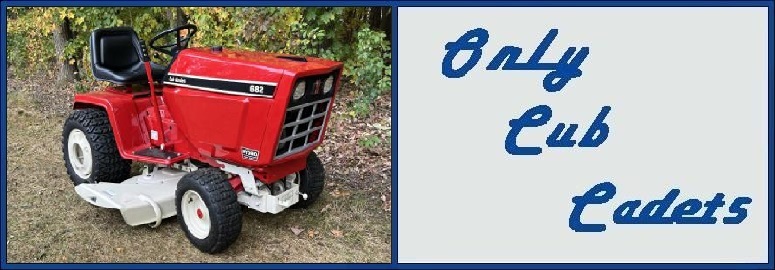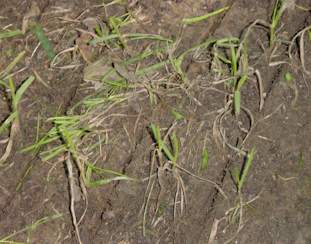
 |
PLEASE PATRONIZE OUR SPONSORS!






|
|||||||
 |
|
|
Thread Tools | Display Modes |
|
#1
|
||||
|
||||
|
I'm starting to get my 1450 ready for the fall when I will need to overseed the lawn. My front lawn gets about 10-12 hours of full sun and with water at $10/768 gallons here, watering is not something that can be done too often, so by the time fall comes the lawn looks a little tired. Got a hold of a 3 pt aerator and a walk-behind dethatcher/verticutter so I'm ready to go equipment wise. Still undecided between Lesco and Bullseye tall fescue seed, might spend the extra dollars and go with the Bullseye since it's the top performer in my area in NTEP tests. The thing that puzzles me, is the correct procedure for overseeding. I have been reading forum after forum, page after page, and advice is plentiful for contradictory:
- Dethatch first to increase the change of seed to soil contact. - Don't dethatch, it's not recommended or needed for tall fescue. - Dethatch then aerate then seed so the seeds can go in the holes. - Aerate then seed then dethatch to break up the plugs. - Seed first then aerate and dethatch. - Fertilize at the same time you put down the seed. - Never fertilize at the same time as putting down the seed, wait until the new grass starts to come out. etc. etc. I finally found the North Carolina Cooperative Extension site, where you can "ask and expert". Great I thought, let me get some advice from the pros. Some lady answered me and said to till the whole lawn  . I may have some dry spots but that's hardly necessary. So what do you all do when it's time to overseed? . I may have some dry spots but that's hardly necessary. So what do you all do when it's time to overseed?
|
|
#2
|
|||
|
|||
|
I'm going to give you my opinion. This is based on years of farming, and also from my experience seeding grass. But, I'm afraid I'm just going to be just another opinion.
1.) NEVER fertilize and seed at the same time. The fertilizer can kill the germination of the seed. Always wait till grass is growing to fertilize. (I suggest in the spring.) 2.) I don't de-thatch.....ever. I think it's a waste of time if you are going to core it. Or if you aerate. I'd mow it short and sweep the lawn. (No clippings to inhibit the core aerator.) Then core it. Then seed it. (Because for whatever reason, seed seems to grow better in the ground.) The next step is choice, I think any of the following is ok: Either use a dethatcher to "scuff" the dirt/cores to cover the seed. Or you could use a spike aerator. Or, use a lawn roller. No matter what, end with rolling it with a lawn roller. Doesn't have to be heavy, just something to firm the seed bed. Plus, it will help break up the left over cores. Then water it everyday. I don't know what kind of soil you have, but I use a grass seed blend from my local (farm) seed store. It's a blend of fescue grasses, rye grass and Kentucky Bluegrass. It does very well because the seed that grows best in the different soil/sunlight/shade/dry areas thrives, and the other grasses die off. That way, you get a uniform looking coverage, and don't have to seed differently. I pay about $150 a bag for the seed. That's my take on it! 
|
|
#3
|
||||
|
||||
|
A farmer I am not, nor a expert on lawn seeding. Soooooooooooooo,
IMO. Only I was told years ago that de-thatching is good for a lawn in the spring & fall & then mow the snot out of it. This helps a established lawn catch a breath of fresh air from the compacted clippings that accumulate from all the cutting one does. I de-thatch my lawn this way & seems good. So I do it. When I 1st., started doing this the thatch if picked up would fill the cart 2x's.. That's a lot of compacted clippings. If anything this gives me more seat time & gives my feeble mind a feeling of doing something good & helping my lawn. I would think that seeding would benefit a lawn better in the spring to promote new growth rather than fall? Why would one drop seed & just let it set all winter? Breaking up the soil somewhat & then seeding in the spring with some natural wetness would be better? Like I said I'm no expert but.........? NIK,
__________________
It dont cut grass, but its yellow. |
|
#4
|
||||
|
||||
|
Quote:
 Quote:
I'd like to mix some KBG with tall fescue, just not sure if it would survive the summer on just rain... |
|
#5
|
||||
|
||||
|
Quote:
Quote:
Bill |
|
#6
|
|||
|
|||
|
Quote:
Quote:
This is what you really need. I'm wanting to build a smaller version. It is for reseeding, or overseeding. LP seeder.jpg |
|
#7
|
|||
|
|||
|
I dont dethach unless there is high thatch buildup (my current lawn doesnt have much thatch buildup at all). But now that I think about it I dont think I would dethach, since you are going to aerate or slit or some other such method.
Getting the seed in firm contact with the soil is key to germinating. And it has to be kept moist during this time. So for me in the Northeast, starting too late in the Fall doesnt give it enough time to get going before Winter (and early/late summer is too big a risk of not enough water/rain, unless sprinklers are used). I have had good luck with the slitters to churn the soil up a bit and give a place for the seed to wash into the soil. I dont roll it though (would, and think its a good idea, but just dont have a roller). The slitter (ran in crossing diagonal pattern) cuts small rows for the seed to get down into and then the rain washes the loose soil over it. Seed on the surface is a complete waste. Any spots that you cant get into the soil I like mulching over with peat moss, it holds the moisture in well. I wouldnt use fertilizer. And definitely do not use a weed and feed, since these suppress germination. |
|
#8
|
||||
|
||||
|
These methods are VERY
regional and seasonal My first lawn was in Massachusetts, and I thought I knew EVERYTHING about lawncare, the cool evenings REALLY promoted grass growth,,,  I moved to Virginia, and found I could not grow grass!!  The peroids of heat, and dry conditions of Virginia, as well as sand, makes it difficult to grow grass. In Virginia, I never dethatch, the thatch decays faster than I can grow grass. In Virginia, SUPER tall grass promotes grass growth, because the tall grass shades the soil. In Virginia, only spring and fall seeding is possible, the seed will rot before it can sprout in the summer,,, I could seed in a snow storm in the winter and get better germination than in July or August. Actually, seeding just before a snow storm is a pretty good time to seed, it packs the seed tight against the soil.... Oh, yea, the tilling,,, do it this time of the year, and you will be lucky to get a few weeds to sprout,,,, before September!!  Anybody got the PH# of a good sod farm!!??  
|
|
#9
|
||||
|
||||
|
Quote:
I've done some more research on the Craftsman "dethatcher" I bought a while back. It is made my MTD and was sold for a short period under the Craftsman brand. The blades look exactly like this: Tried to look up the blades by the part number on eBay, only to find that MTD is selling this machine all over Europe as a verticutter rather than a dethatcher. Took it out to the back to try it out, it completely destroyed the existing grass, the final result looked something like this:  Definitely get plenty of seed to soil contact, but I'm not sure the existing grass will survive. Kind of skeptical of using it now. |
|
#10
|
||||
|
||||
|
Good thread, I'm learning a lot from you guys. Lets just say my lawn is challenged. I can kill it fast but getting it to grow is an issue.
__________________
2264 with 54 GT deck 1641 AKA Black Jack with a 402-E Haban Sickle bar mower JD317 dump truck BX2670 with FEL |
 |
|
|
Cub Cadet is a premium line of outdoor power equipment, established in 1961 as part of International Harvester. During the 1960s, IH initiated an entirely new line of lawn and garden equipment aimed at the owners rural homes with large yards and private gardens. There were a wide variety of Cub Cadet branded and after-market attachments available; including mowers, blades, snow blowers, front loaders, plows, carts, etc. Cub Cadet advertising at that time harped on their thorough testing by "boys - acknowledged by many as the world's worst destructive force!". Cub Cadets became known for their dependability and rugged construction.
MTD Products, Inc. of Cleveland, Ohio purchased the Cub Cadet brand from International Harvester in 1981. Cub Cadet was held as a wholly owned subsidiary for many years following this acquisition, which allowed them to operate independently. Recently, MTD has taken a more aggressive role and integrated Cub Cadet into its other lines of power equipment.
This website and forum are not affiliated with or sponsored by MTD Products Inc, which owns the CUB CADET trademarks. It is not an official MTD Products Inc, website, and MTD Products Inc, is not responsible for any of its content. The official MTD Products Inc, website can be found at: http://www.mtdproducts.com. The information and opinions expressed on this website are the responsibility of the website's owner and/or it's members, and do not represent the opinions of MTD Products Inc. IH, INTERNATIONAL HARVESTER are registered trademark of CNH America LLC
All material, images, and graphics from this site are the property of www.onlycubcadets.net. Any unauthorized use, reproductions, or duplications are prohibited unless solely expressed in writing.
Cub Cadet, Cub, Cadet, IH, MTD, Parts, Tractors, Tractor, International Harvester, Lawn, Garden, Lawn Mower, Kohler, garden tractor equipment, lawn garden tractors, antique garden tractors, garden tractor, PTO, parts, online, Original, 70, 71, 72, 73, 76, SO76, 80, 81, 86, 100, 102, 104, 105, 106, 107, 108,109, 122, 123, 124, 125, 126, 127, 128, 129, 147, 149, 169, 182, 282, 382, 482, 580, 582, 582 Special, 680, 682, 782, 782D, 784, 800, 805, 882, 982, 984, 986, 1000, 1015, 1100, 1105, 1110, 1200, 1250, 1282, 1450, 1512, 1604, 1605, 1606, 1610, 1615, 1620, 1650, 1710, 1711, 1712, 1806, 1810, 1811, 1812, 1912, 1914.